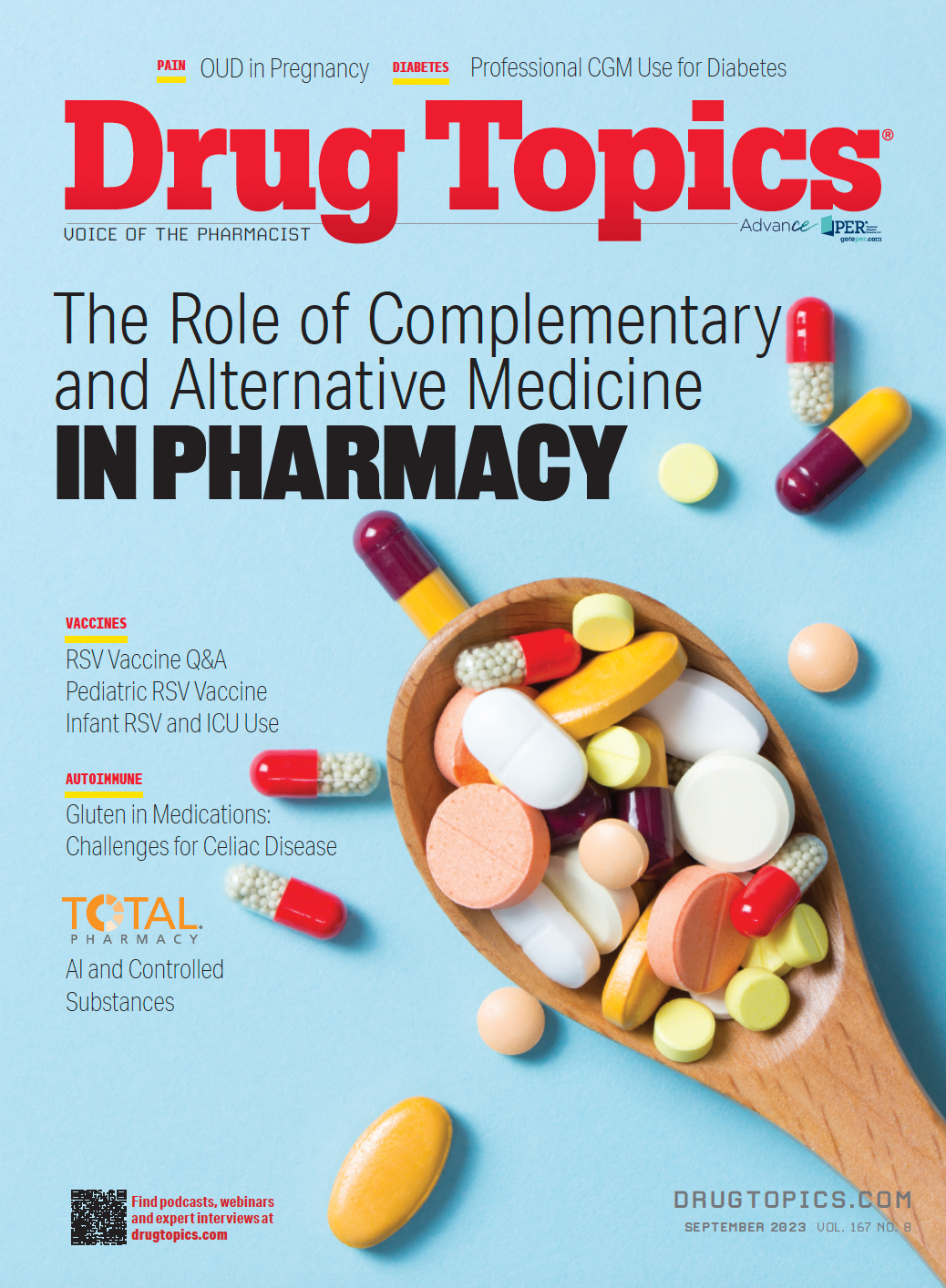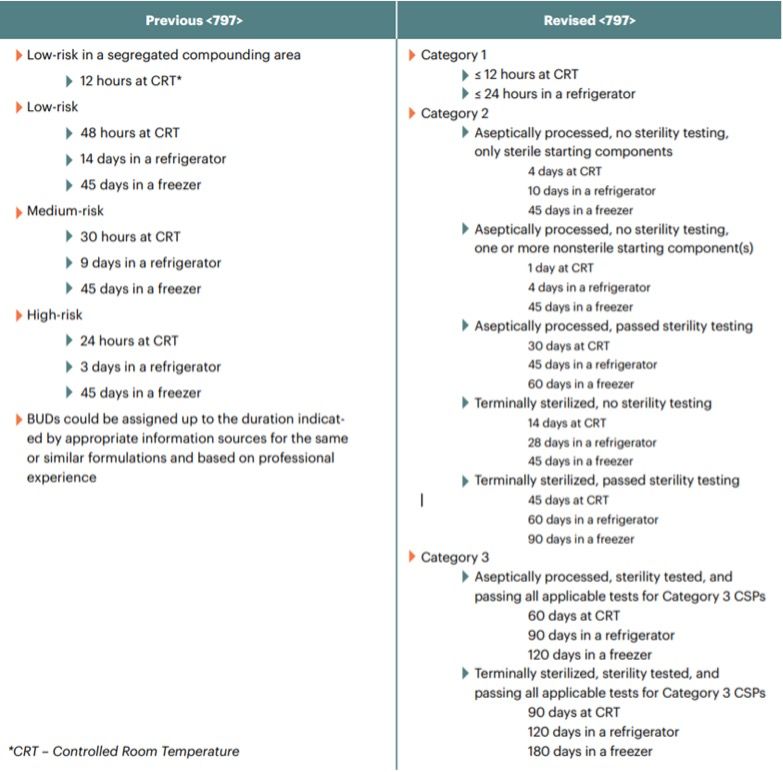USP <797> Updated Guidelines
The long-awaited revised USP <797> guidelines will become official on November 1, 2023.
Millions of sterile compounds are made each year in the United States to meet the unique needs of patients. Understanding the risks inherent in sterile compounding, and incorporating established standards, are essential for patient safety.
The United States Pharmacopeia (USP) develops standards for preparing compounded sterile medications to ensure the patient's benefit and reduce risks such as contamination, infection, or incorrect dosing. Although they are not a governing body, USP standards and guidelines are often adopted and enforced by State Boards of Pharmacy.
USP Chapter <797>, first enacted in 2008, sets forth standards for sterile compounding. USP <797> aims to reduce negative outcomes related to compounded medication.
Following a multi-year effort dating back to 2019, the long-awaited revision of USP <797> was published on November 1, 2022, and will become official on November 1, 2023. This "official date" is the date by which compounders are expected to meet the requirements of the new standards. However, ensuring compliance with the requirements of these standards is the responsibility of the applicable regulatory jurisdiction. Regulatory bodies—including state boards of pharmacy—may have different adaptations, so pharmacists should be sure to check with their local state board of pharmacy; USP has no role in enforcement.
The updated version of USP <797> includes several changes. These revisions pertain to the beyond-use dates (BUDS) and reflect advances in science and clinical practice. Additionally, the revisions aim to clarify topics that were not consistently understood. The updated version of the USP <797> also incorporates input from stakeholder engagements and over 1400 comments received during the public comment period of September 2021 to March 2022. This official document can be accessed by subscribing to the USP Compounding Compendium.
Some of these updates to USP <797> are more than 3 years in the making, and many facilities and state boards of pharmacy have preemptively adopted some of the standards. For example, some facilities have already spent millions of dollars on cleanrooms to meet the updated standards. The design of the cleanroom must consider all essential processes, procedures, and personnel. All furniture and materials that enter the area must be nonpermeable, nonshedding, cleanable, and disinfectant resistant. Ceilings, walls, floors, shelving, fixtures, cabinets, pass-throughs, and counters must also support cleaning, be nonshedding, and remain free of cracks and crevices that hinder sanitation. The cleanroom must have epoxy paint, clean room grade (smooth and seamless) ceiling tiles, and seamlessly coved vinyl flooring. In addition, the Primary Engineering Control (or hood) must be an ISO Class 5 environment or better. The positive pressure buffer area must be an ISO Class 7 environment or better, and positive pressure ante rooms must be an ISO Class 8 environment or better.
Although there have been many updates that have already been adopted, there are several changes cannot be implemented until the official chapter release date. Let's briefly discuss some of the major changes.
As outlined in the Table, the revised chapter changed the categorization of compounded sterile preparations (CSPs) from microbial contamination risk levels (ie, low-, medium-, and high-risk levels) to Category 1 and Category 2 CSPs. Category 3 CSPs were added to describe the requirements a compounding facility must meet at all times for assigning BUDs up to a maximum of 180 days.
Table. Comparison of BUDs between previous and revised <797>. Source: USP Compounding Standards and Beyond-Use Dates fact sheet.
Personnel who are compounding category 1 and 2 CSPs will have to complete a visual observation of hand hygiene and garbing, gloved fingertip sampling, and media fill testing every 6 months; and every 3 months for category 3 CSPs. Supportive roles that oversee compounding staff but do not compound will have to demonstrate competency every 12 months.
Viable air sampling is required every 6 months for Categories 1 and 2, and is now required monthly for Category 3 compounders. Surface sampling is now required monthly for Categories 1 and 2 CSPs, and weekly for Category 3 CSPs.
The revised chapter clarifies that docking, a proprietary bag and vial system for immediate use, is not considered compounding, whereas docking for future use is considered compounding and must comply with all standards. The BUD on immediate-use compounds has now been extended from 1 to 4 hours if fewer than 3 ingredients exist.
These are just a few of the major changes, and there is no doubt that many of the chapter revisions will create many changes in our practices. Still, we will increase patient safety and have the opportunity for extended BUDs—a win-win in my book!
This article originally appeared on pharmacytechnician.org and was republished as part of a partnership between Drug Topics and the National Pharmacy Technician Association.
References
1. Pharmaceutical compounding—sterile preparations. United States Pharmacopeia. Accessed March 29, 2023. https://www.usp.org/compounding/general-chapter-797
2. FAQs: USP and its standards. United States Pharmacopeia. Accessed March 29, 2023. https://www.usp.org/frequently-asked-questions/usp-and-its-standards
3. USP compounding standards and beyond use dates (BUDs). United States Pharmacopeia. Accessed March 29, 2023. https://www.usp.org/sites/default/files/usp/document/our-work/compounding/usp-bud-factsheet.pdf

Pharmaceutical Compounding, Storage of Faricimab Preserves Stability, Binding Properties
November 28th 2023Maintaining the structure and function of antibody biologics like faricimab is critical for their administration via intravitreal injection (IVI), a common treatment approach for retinal diseases.
